


1940 -

Recording the History -






The Bloodhound Missile Preservation Group.
Why the need for a Bloodhound Missile preservation group?
Simply because if no action had been taken, many surviving Bloodhound MKII Missile Sections were likely to have been disposed of .
To give you some background on the BMPG and Bloodhound items left in the UK, please read the article below
by Pete Harry.
Following the article are Photo’s taken
at the BMPG Open Day
on Saturday July 27th at RAF Cosford.
Please be aware that text and images on this page are copyright of either ©Pete Harry BMPG, or
©rafaberporth.org.uk and may only be reproduced elsewhere with permission.
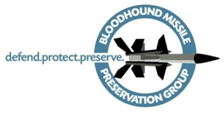

Bloodhound Missile Preservation Group (BMPG)
 The story so far. -
The story so far. -
By Pete Harry – Founder of the BMPG
Dedicated to my wife Sarah who has put up with me working for many hours hidden away in my home ‘office’ and allowing me to convert a bedroom into a computer test facility.
The Bloodhound Missile was a key part of the integrated UK air defences during the Cold War. Originally designed to counter nuclear armed, high flying bombers at long range, it entered RAF service in 1964. In service, Bloodhound continued to be improved with new technology and its operation role enhanced to include the countering of low level attacks. It is only right that an example of a Bloodhound system is preserved for future generations. Bloodhound was an important part of the UK’s Cold War history.
I never intended to establish a Bloodhound Preservation Group but here I am. It all started after I visited various aviation Museums and discovered the sad state of most of the Bloodhound exhibits. My first thoughts were: “Can anything be done to help these Museums by offering to provide a bit of TLC for their Bloodhound exhibits ?”. Perhaps washing the green mould from a missile, or make a donation so that such work could be done.
My enthusiasm in this direction was short lived for various reasons, personal offers of help fell in to the ‘too difficult’ basket. Museums have rules, policies and procedures. You can’t just pitch up and wash a missile. I also discovered that financial donations to a museum are usually put in a pot and the Museum decides what to do with those funds, not you.
Perhaps my initial enthusiasm being somewhat dented was understandable as Museums have had some bad experiences with ‘enthusiasts’. Add to this the usual Health and Safety, insurance requirements, etc. etc, and it all becomes very difficult. I also had to appreciate that aviation Museums have to set priorities for funding and resources and Bloodhound wasn’t necessarily a top priority, understandable if your main reason for being a Museum is based around Aeroplanes.
During the initial period of my ‘can I help’ approach, it became known at various Museum’s that I was interested in Bloodhound. As a result I received a phone call from the Bawdsey Radar Museum who in turn had received a call from an individual who was offering some Bloodhound items. Was I interested? Phone details were given for the contact and after some delay I made contact.
To my amazement what was being offered was a complete Bloodhound MKII Launch Control Post (LCP). The plan by the person offering the LCP was to break it up and sell the parts to Museums, electronic enthusiasts and then scrap the Cabin. During a Sunday evening phone call I realised I could save or lose the LCP. I chose to save it. Actually the LCP owner was happy that it would be preserved complete rather than broken up.
I was somewhat puzzled during the negotiation for the LCP as to where it was located. I was only aware of two that were complete. One at the RAF Museum Cosford, the other at the Imperial War Museum, Duxford. Now this is where I have to cut the story a bit short. The LCP I had just acquired originally belonged to the Bloodhound Section once held by the RAF Museum at Cosford. This example was still being stored by the RAF Museum, so after becoming its owner I received nothing but the full support from the RAF Museum in recovering it.
Today the LCP is located in a Hangar on the airfield at RAF Cosford, with the kind permission of the RAF. The Hangar is a secure location and importantly provides protection from the elements. Once recovered it was time to carry out a survey. The external appearance was poor but the Cabin sound while the internal condition was very dirty with signs of some rodent activity. The Computer, displays and other electronics were 90% complete. Missing though was the Top Switch Panel and the Engagement Controller’s Desk with its Tracker Ball. All other items being present, including the Castell Keys for closing the firing lines to the Missile and the original Dustette Vacuum Cleaner!
Now I have an LCP what do I do with it? As one museum curator pointed out ‘it’s just a box, how can you interpret (museum speak) that’? Difficult to interpret a box it may be, but what’s inside is the best Cold War Computer game you’ll ever find.
Obvious conclusion; restore the Bloodhound Simulator and bring life back to the LCP.
The engineering and technical work to date in carrying out the restoration of the LCP’s Computer could fill several volumes. One day I may get around to writing such a book but not now, I’m too busy restoring it!
The LCP being restored is a MK2A. It is a digital display version of the original design which had analogue displays. The MK2A also has the Bloodhound Simulator ‘built in’. In the original LCP design from 1964, the Simulator was in a separate Cabin.
The first problem with restoring the LCP and its Simulator was how to replace the missing items. “How do we manufacture a top Switch Panel and Engagement Controller’s desk ?” For a start the indicator lamps are no longer available. We were faced with other major challenges; we had no spares and no way of testing the various Computer boards or any of the other electronics in the LCP. Any sane person at this stage would have retreated gracefully and the LCP would have remained ‘just a box’.
Fate, luck and opportunity now played its hand. As the restoration commenced the BMPG were developing a close relationship with the Swiss Bloodhound BL-
The second piece of good fortune for the BMPG came via the RAF’s 5131 Bomb Disposal Squadron who used a derelict LCP cabin for training exercises. With the relevant permissions given, a visit to the LCP showed that while the Argus Computer had been removed, along with a number of other items in the display console, other items remained. One item that was still in place was the top Switch Panel for the console. It had some damage but we couldn’t believe our luck. So now two missing parts that were a serious hindrance to the restoration of the LCP were replaced and we also had some spares.
All we had to do now was replace the missing items, switch on the LCP and see if it came to life.
I don’t think so! Doing such a stupid thing would definitely need a fire extinguisher to hand. The BMPG policy for the LCP Computer restoration is based on removing items, testing and if needed ,repairing them. Only known serviceable items are returned to the LCP. To enable Computer testing and proving, a test rig has been created to replicate the equipment in the LCP. All constructed from spare parts and recovered items.
I’m often asked if the BMPG have any Manuals. (Air Publications, or AP’s in RAF terminology). The restoration of the LCP Simulator would be extremely difficult without them. When I acquired the LCP in 2012, it contained no manuals at all. But today the BMPG have all the manuals and original manufacturer’s documents to help restore and maintain the LCP Simulator.
I have to thank the RAF Museums, both at Cosford and Hendon, for the loan of RAF LCP AP’s, and the Swiss BL-
The Bloodhound LCP and Simulator restoration is progressing well. Serviceable items that are tested and ready to be re-
All Power Supplies
All fan units
The Argus 700 Computer with its Winchester disk
The Argus 700 Computer Monitor
The four Console Display Monitors
Work is now in progress to test the Display Controllers, the final part of the system, before reinstalling equipment back in the LCP. Current work in the LCP involves checking the power circuits.
My acquisition of the LCP and the BMPG’s Simulator restoration project should have remained the only story, but is hasn’t.
First, some background:
The only remaining complete representation of a Bloodhound MKII Missile Section is held by the Imperial War Museum (IWM) at Duxford, most of which is not on public display. The Bloodhound Section originally at the RAF Museum Cosford has been dispersed with some items retained, including the Missile and Launcher.
One item that remained at the RAF Museum Cosford was their Bloodhound Section’s Type 86 (T86) Radar, deteriorating badly, as it was also stored out in the open. A new home for the T86 was urgently required and it was placed on disposal, subject to the museum’s disposals policy.
The policy required that the Radar was advertised with accredited Museums having first refusal. If there was no interest, then the threat of a ‘metal recycling plant’ would hang over the T86.
No other Museum was interested. What was the BMPG to do?
In February 2013 the BMPG took ownership of the T86 Radar which was successfully recovered with the help of the RAF Museum at Cosford. The radar now stands next the LCP, under cover and secure.
An initial survey has shown the T86 to be in better condition than its appearance would indicate. Both the T86 and LCP cabins are made of an aluminium alloy, so there were no major corrosion issues. The wooden walk way on the roof of the T86 was completely rotten and has been removed. Inside the cabin the Radar is 90% complete. (The items missing having been removed by the RAF before being donated to the RAF Museum). Manuals have to be sourced and to date the BMPG have acquired some, but not all , that are required to maintain and restore the Radar.
Long term plans for the T86 will involve some functionality being returned to the Radar but it will never transmit again. As with the LCP, I have a personal belief that some life should return to the T86. I’m not a fan of ‘dead’ exhibits.
Power HAS already been returned to the T86. Firstly to get the Cabin lights on, (also the first job in the LCP), and to apply 24 volts to remove the Aerial brakes so the Aerials can be moved.
Currently the LCP and T86 Radar are not on public display, but members, or prospective members, of the BMPG can visit them. Simply email me and a visit can be arranged. My address is at the end of this article .
To secure the long term future of the LCP and T86 radar the plan is to move both to the new Bristol Aviation Centre being established at Filton. The Centre is being created by the Bristol Aero Collection and supported by Heritage Lottery funding. At Filton the LCP and T86 will join the Bristol Aero Collection’s Bloodhound MKII Missile and Launcher for public display in a heritage display Hangar.
Being able to display the main components of a Bloodhound Section, protected from the elements, is essential to their long term preservation. Filton is fitting location as BAC, as BAE was then, were the prime contractor for Bloodhound.
Without the support of the following the BMPG wouldn’t be making such good progress in restoring the Bloodhound Simulator.
RAF Museums Cosford
RAF Museum Hendon,
RAF Cosford,
No1 Radio School RAF Cosford
No 5131 (Bomb Disposal) Squadron -
And last but not least, the Swiss BL-
And of course, to all the museum curators and officers in the RAF Units identified here, who have given their support and help to our project, I am extremely grateful.
What is known of the history of the BMPG’s LCP and T86?
The LCP is Serial No. 1022 and was part of 25 Squadron B Flight at RAF Wildenrath in Germany during the 1970’s.
The location and use of the LCP following its return to the UK in the early 1980’s is not known. The LCP was converted to a MK2A variant at some time between 1986 and 1989.
The T86 Radar was originally in use with a Swedish Bloodhound unit until returned to the UK and modified to the RAF T86 standard. The T86 is Serial No. 501 and was the T86 Radar for 85 Squadron’s Yellow Section at RAF Bawdsey in the latter part of the 1980’s.
The BMPG is taking every opportunity to display its LCP and T86 to the public, and this first opportunity came at the RAF Cosford Air Show on June 7th 2013.
It’s surprising what a quick coat of paint can achieve. The Bloodhound MKII Missile displayed at the Air Show was on loan, courtesy of the RAF Museum.
Continuing restoration work on the LCP and T86 is being carried out by members of the BMPG who previously served in the RAF, worked at Ferranti or BAC. If not carrying out ‘hands on’ tasks then contributing with information and advice from their knowledge of the Bloodhound System. New members are being found via the Internet as our story spreads. If YOU are interested in joining the BMPG and becoming involved in our restoration projects then please drop me an email. You’ll be made very welcome.
Pete Harry
Bloodhound Missile Preservation Group
http://groups.yahoo.com/Bloodhound Preservation/.
www.bmpg.org.uk
Email: contact@bmpg.org.uk
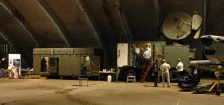
BMPG’s LCP & T86
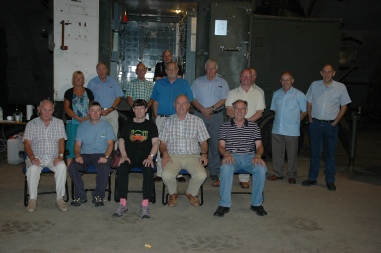
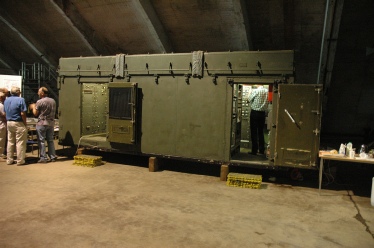
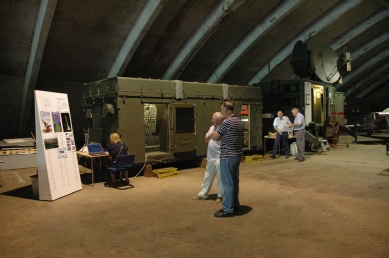
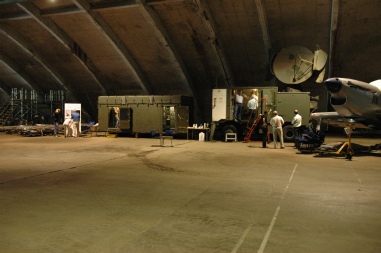
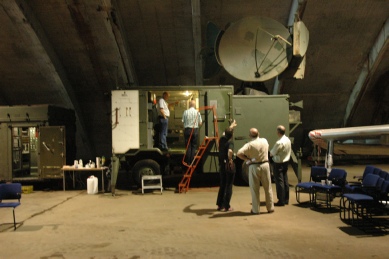
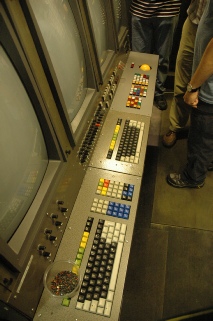
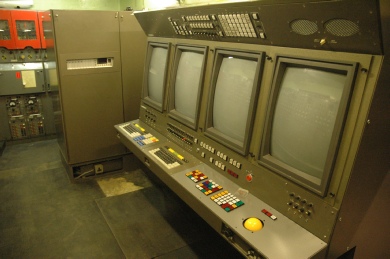
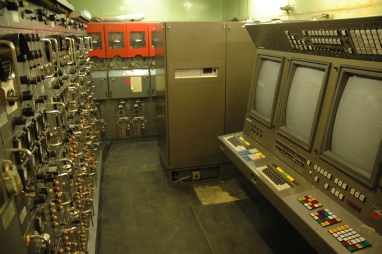
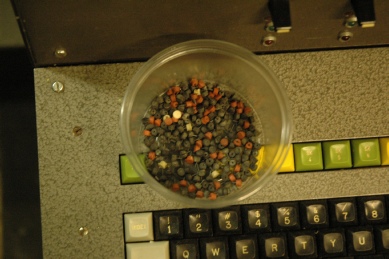
BMPG Open Day-
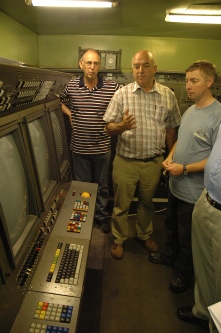
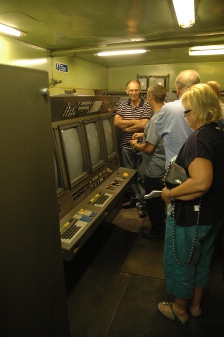
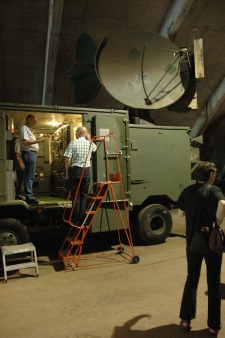
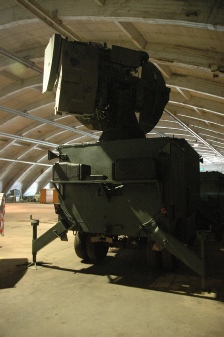
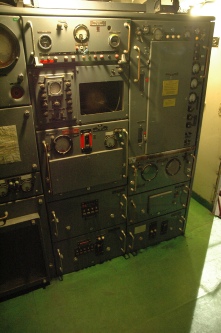
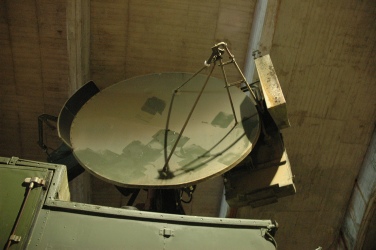
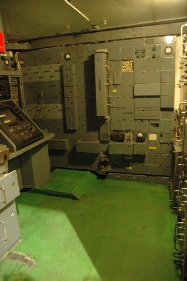
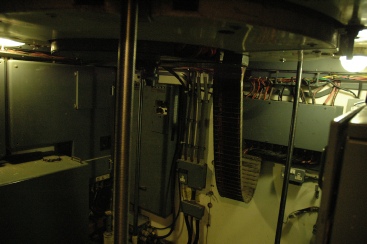
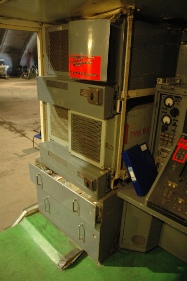
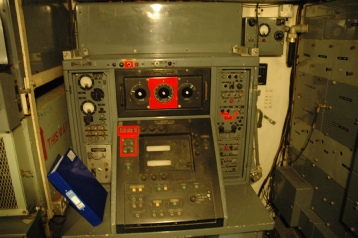
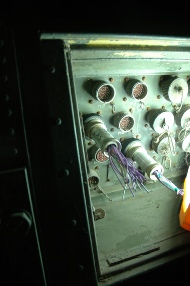

More Radar Type 86 Photo’s below.

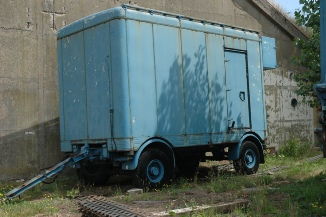
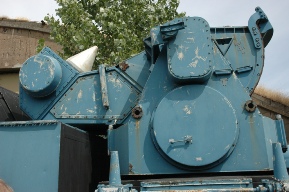

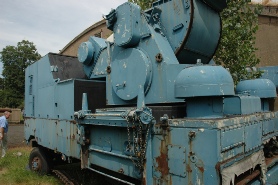
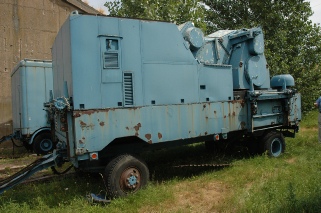

Bloodhound Mk1 RADAR TYPE 83
The LAST Bloodhound Mk1 T83 Radar left in the World. It really needs to be saved soon to add to the story of the Cold War, before the units are completely beyond restoration, .

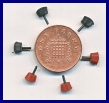
What’s this?
“CLICK” to find out.
Present at the BMPG Open Day July 2013, with some information about them.
Mr Clifford Hindle
Mk1 1960 RAF Newton & Filton Mk1 course. 1961’-
Mr Peter Murray
Active on LCP restoration. Ferranti Commissioning Engineer-
Mr Graham Martin
Ferranti Software Engineer-
Mr Ralph Stamper accompanied by Brenda Stamper
Mk1 Type 83 Radar -
Mr Simon Green
T86-
Mr David Scobbie
LCP L21 course RAF Newton. 1973, 112 Sqdn RAF Episkope . 1975 RAF Newton , maintenance and Instructor -
Mr Brian Blestowe
BAC Engineer. Mk2 Launcher refurbishment, Filton. Bristol Aero Collection.
Mr Patrick Lenaghan accompanied by Mr William Lenaghan, Patricks Brother.
Engagement Controller. Joined 17JSTU from AEO on Vullcans in 1964 as EC/Trials Coordinator for EW Release Service. Did EW Trials with others in the North Coates Farmhouse.
Mr Mike Ford
1963 Newton Mk2 Missile Course. 1964, New 65 Sqdn RAF Seletar -
Mr Richard Vernon
Active on LCP & T86 Restoration. Missile-
Mr Mike Strange
Active on LCP & T86 Restoration. Missile-
Mr Jonathan Aylen
University Academic. Argus Computer involvement, from process control to Bloodhound.
Mr George Buck
Radar T86.1970-
Mr Peter Harry
Active on LCP & T86 Restoration. T86 25 Sqdn, C flight. 1973-
Mr Neil Cartman
Active on LCP & T86 Restoration. LCP and Technical Support.ervisor.
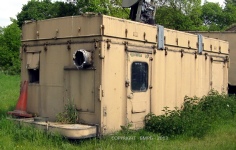
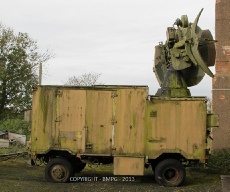
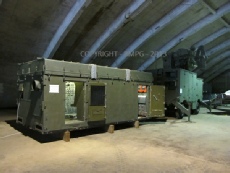
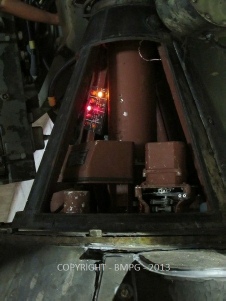
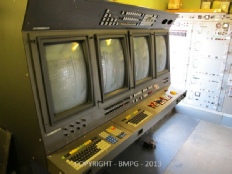
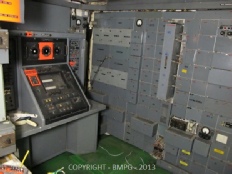
CLICK IMAGES TO ENLARGE
A reminder that ALL images on this page are the COPYRIGHT © of either Pete Harry at bmpg.org.uk
or Mike Ford at rafaberporth.org.uk.
They may only be reproduced elsewhere with permission of the copyright holder.
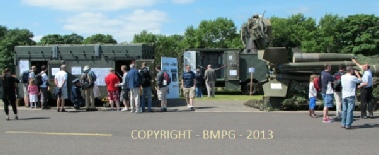
BMPG Open Day September 12th 2015
The BMPG are having an Open Day at RAF Cosford on September 12th 2015, starting at 10AM. Interested in coming along? If you are please contact Peter Harry (below) and he will be in touch with further details.
The Open day is an opportunity to see the progress being made on the restoration of BMPG's Bloodhound MK2 LCP and Type 86 radar. The main achievement to date being the restoration of the Bloodhound simulator. BMPG's LCP is a MK2A Ser. No. 1022 which means the LCP went through the upgrade program in the late 1980's. The upgrade installed the more powerful Argus 700 which not only digitised the displays for the Engagement Controller and Technical Supervisor but also incorporated the simulator in to the operational LCP.
The restored simulator uses all the original LCP systems and RAF software. Our Type 86 radar hasn't been forgotten and work progresses on its external preservation.
Features of the Open Day will include:
➡ The opportunity to run simulator exercises in the LCP using the original RAF software (Tame Tech. Sup. provided
➡ View some original RAF films featuring Bloodhound MKII
➡ Meet others who served on Bloodhound MKII in the RAF or were involved in its design
➡ Make it a double and visit the RAF Museum at Cosford as well
Email Peter Harry, on: contact@bmpg.org.uk to register by September 3rd 2015.
You NEED to register so RAF Cosford security passes can be issued.
Please do NOT just turn up on the day as you will not be able to gain access.





